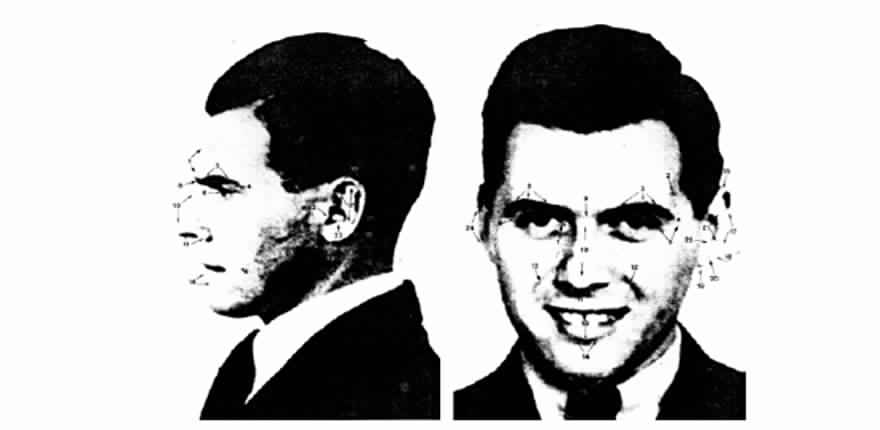DRONE ATTACKS
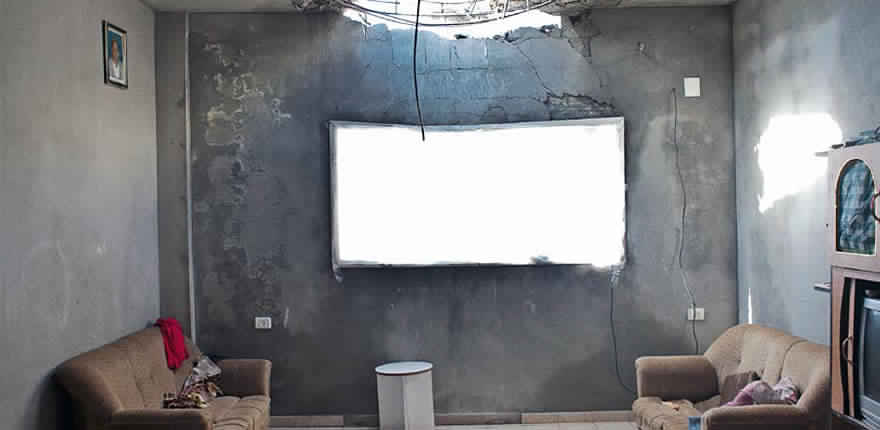
Some drone-fired missiles can drill a hole through the roof before burrowing their way deep into buildings, where their warheads explode. The size of the hole the missile leaves is smaller than the size of a single pixel in the highest resolution to which publicly available satellite images are degraded. The hole is thus at the “threshold of visibility” and might appear as nothing more than a slight color variation, a single darker pixel perhaps. This has direct implications for the documentation of drone strikes in satellite imagery, which is often as close to the scene as most investigators can get. When the figure dissolves into the ground of the image, it is the conditions–legal, political, technical–that degrade the image, or that keep it at a lower resolution that becomes the relevant material for forensic investigations.
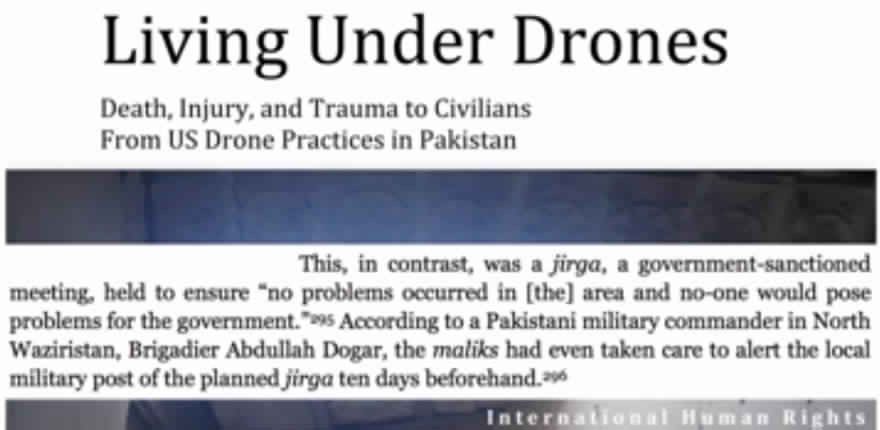
A hole is not simply an absence. It is more, not less, information than the mattter that surrounds it, be that reinforced concrete or ozone-rich atmosphere. This is because a hole is information both with regard to the materiality it perforates (concrete/ ozone) and to the shape of its absence.
HANNIBAL IN RAFAH
A day in the War on Gaza of 2014
On July 8th, 2014, Israel launched Operation Protective Edge. which it said aimed at stopping rocket attacks from Gaza and the building of cross border tunnels . On August 1st, 2014 Israel and Hamas agreed to a 72-hour humanitarian ceasefire that would take effect at 8 am that day.
Thousands of Palestinians started returning to their homes. In Rafah, the southernmost city in the Gaza Strip, a group of Israeli soldiers patrolling on a field of melons encountered a group of Hamas fighters. A firefight ensued, resulting in the capture of an Israeli officer into a tunnel. Israel implemented the Hannibal Directive to a tunnelian fighter. That calls for the unleashing of massive fire on persons, vehicles and buildings. What
followed became the deadliest day of the war, with more than 120 Palestinian civilians killed on the roads.
Together with Amnesty International, Forensic Architecture undertook a detailed reconstruction of the events of that day. The analysis relied on testimonies from victims, videos and photographs collected on the ground and from social media, as well as a unique set of satellite images.
Key to this investigation was the creation of ‘image complexes’ – a timespace relation between dozens, sometimes hundreds of images and videosgenerated around incidents by different users from multiple perspectives, such as ground, air and outer space. These images and videos are collected by citizens, journalists, satellites, the media, and sometimes even also from whatever the military might make available. Learning to see with the ‘image complex’ is thus an active practice that requires construction.
Literally so, we need to construct architectural models in order to locate the images and clips with them, then assemble, archive and compose within them the relation between the images. The virtual architectural environment allows us to match the perspective visible in an image with one that the model can provide thus verifying locations.
Architecture is here essential not only as primary evidence -- the object of analysis -- but
rather as an optical device.
A collage of photographs shows the aftermath of the Israeli air strike on al-Tannur, in Rafah. fah. Mezan Center for Human Rights.
The video installation traces the methodology employed by forensic architecture
in it’s dealing with testimony, social media and satellite imagery.
© Forensic Architecture.
The full report can be seen in https://blackfriday.amnesty.org
Credits:
Forensic Architecture team: Eyal Weizman, Christina Varvia, Nick Axel, Francesco Sebregondi, Shourideh C. Molavi, Gustav A. Toftgaard, Camila E. Sotomayor, Vere Van Gool, Dorette Panagiotopoulou, Jamon Van DenHoek, Rosario Güiraldes, Hania Halabi, Jacob Burns, Mohammed Abdullah, Kent Klich, Ana Naomi de Souza, Susan Schuppli, John Pines, Chris Cobb-Smith, Marc Garlasco, Felix Kalmenson and Eric Salitsky.
AMAZONIA: ARCHEOLOGY OF VIOLENCE
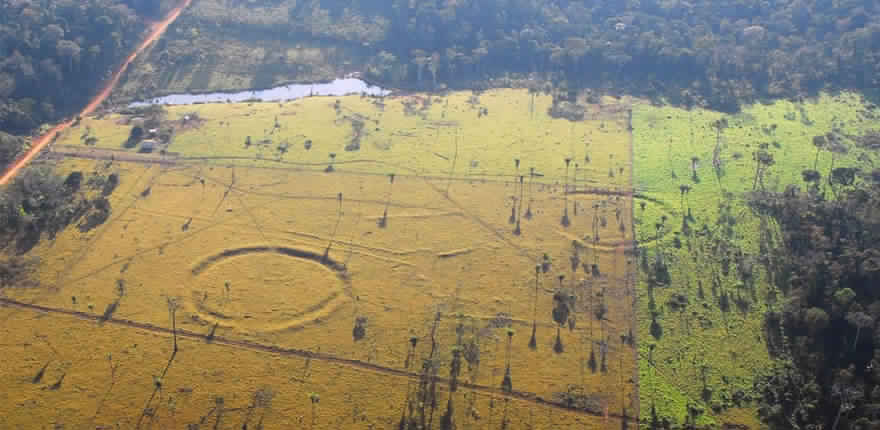 Paulo Tavares
Paulo Tavares
In 2012, nearly three decades after Brazil’s transition to democracy, the Brazilian National Truth Commission was established to investigate crimes committed by the state between 1946 and 1988. One of the most contentious issues examined refers to the violence inflicted upon the indigenous peoples of Brazil after the US-sponsored coup of 1964.
This situation was particularly acute in Amazonia, where large-scale programs of development and resource exploitation were implemented on native habitat. The investigation uses remote sensing techniques to locate the village clusters of indigenous waimiri-atroari people, who were nearly exterminated in the 1970s. Differentiating old growth from young forests built on village ruins, the images manifest the way in which the plant composition of the forest can be read as archaeologica evidence. The cartographies presented here interpret Amazonia as a “constructed landscape,” an environment historically shaped by political and cultural forces.
KILLINGS AT NABKA DAY
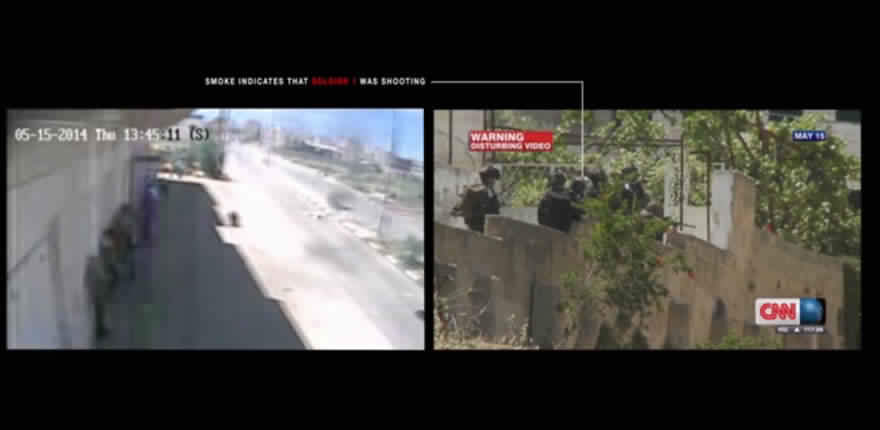
On May 15, 2014, two Palestinian teenagers: Nadeem Nawara (17) andraars, 2014, two POdeh Abu Daher (16), were shot and killed by Israeli forces in the town of Beitunia after a day of protests marking Nakba Day. Both deaths were captured on security cameras installed on a nearby shop and in multiple other media. The Israeli military denied its soldiers were involved.
Forensic Architecture investigation was based on multiple media: sound, image, film, and testimonies were undertaken at the request of the human rights organization Defence for Children International Palestine (DCI-P) acting on behalf of the parents of the deceased.
Based on Forensic Architecture’s investigation, a border policeman was arrested and is
awaiting trial.
Credits:
A report prepared by Forensic Architecture on behalf of Defense for Children International Palestine and the parents of the deceased. Forensic Architecture Team: Eyal Weizman, Nick Axel, Steffen Kraemerand Jacob Burns.
MATERIAL WITNESS
Evidence on trial
Susan Schuppli
Material Witness is a multi-year project that explores the evidential role of matter as both registering external events as well as exposing the partisan practices and procedures that enable such materials to testify publicly. Material witnesses are non-human entities and machinic ecologies that archive their complex interactions with the world, producing ontological transformations and informatic dispositions that can be forensically decoded and reassembled back into a history. In working with this concept, I examine a wide range of materials from human-made to naturally-occurring that record trace-evidence of the violence which generated their contemporary contexts and explore the forums and protocols that enable their latent histories to be rendered visible and made to speak. Within the context of Forensis I focus specifically upon evidence sourced from the archives of the International Criminal Tribunal for the former Yugoslavia which contains more than 9.3 million objects, including videos, audio recordings, photographs, aerial imagery, X-rays, diagrams, floor plans, models, maps and even remnants of charred timber and stone.
OSTEO-BIOGRAPHIES
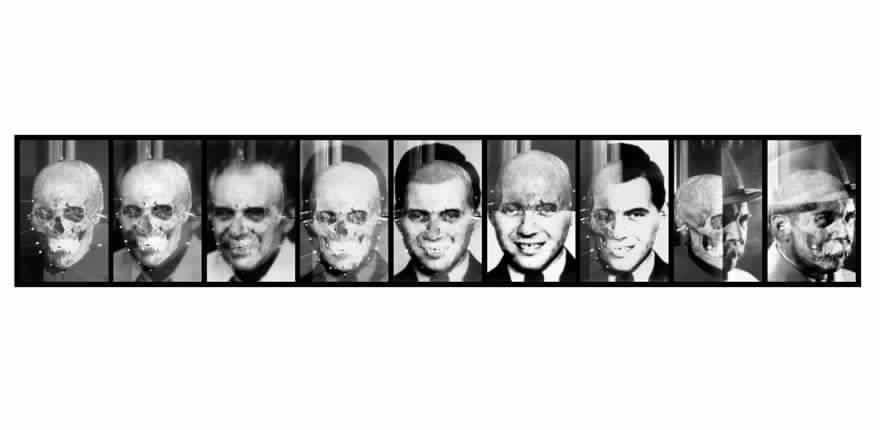 To the untrained eye, all bones look similar – skulls are devoid of the expression and the gestures of a human face. But bones are exposed to the myriad forces of life – labor, location, nutrition, habit, disease, and violence – in a manner similar to the exposure of photographic film to light. Like any photograph, the inscriptions imaged on bones are unequivocal.
To the untrained eye, all bones look similar – skulls are devoid of the expression and the gestures of a human face. But bones are exposed to the myriad forces of life – labor, location, nutrition, habit, disease, and violence – in a manner similar to the exposure of photographic film to light. Like any photograph, the inscriptions imaged on bones are unequivocal.
Whereas DNA analysis can lead to the positive identification of victims, the morphological process of bone analysis (referred to as osteo-biography) searches for the way in which the entire process of life is recorded, or fossilized, in the form and texture of the skeleton. The “biography” of bones, just like their “testimony,” demonstrates the way in which the forensic combination of science and law can animate objects and treat them as if they were human subjects. Human remains are the hinge on which our forensic sensibility turns because the trace of the living subject cannot easily be erased from them; it lingers and haunts them.
MENGELE´S SKULL
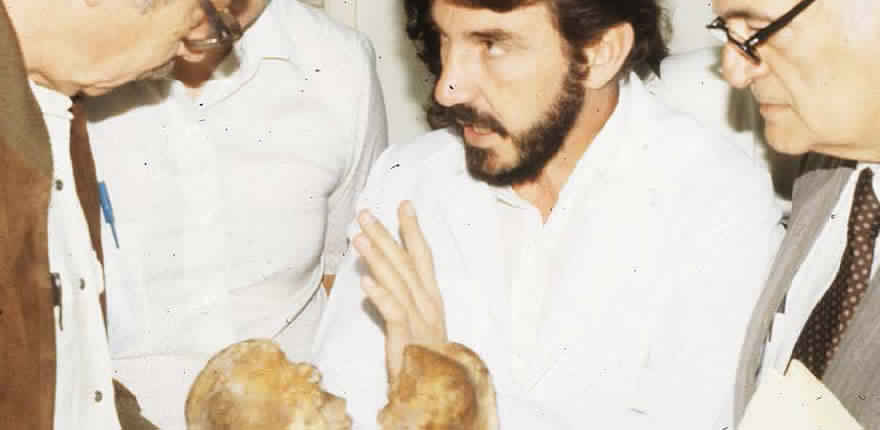
In 1985, the body of Auschwitz doctor Josef Mengele, who had drowned in Brazil in 1979, was exhumed in a suburb of São Paulo. The worlds est forensic experts, including Clyde Snow, were appointed to examine and identify the skeleton. The ensuing process of identification became a legal and technological turning point. Whereas the Jerusalem trial of Eichmann introduced the victims as legal and historical agents and gave birth to what has been called the era of the witness, the process by which Mengele’s remains were identified inaugurated a new forensic sensibility in which it was not the human subject, but rather objects bodily remains that took center stage. Ironically, it was the Mengele investigation that helped to consolidate the process for the identification of the missing people.
Richard Helmer, a German pathologist and photographer, employed a videographic technique of face-skull superimposition, in which a video image of a photograph is placed over a video image of a skull in order to determine whether the two are the same person. The images could show Josef Mengele alternately dead and alive, half dead and half alive– a spectral presence, present and represented at one and the same time. It was a face wrapped over a skull, subject over object, an image of life over an image of death.
